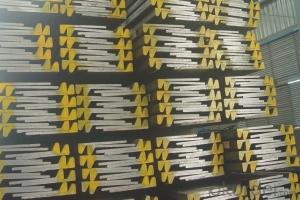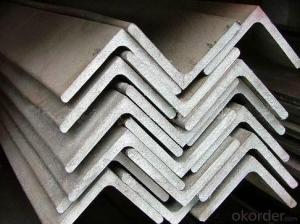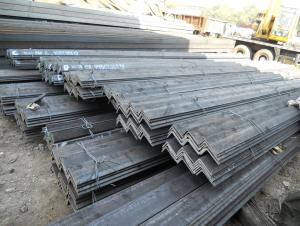MS equal/unequal black & galvanized steel angle bar with high quality
- Loading Port:
- Tianjin
- Payment Terms:
- TT OR LC
- Min Order Qty:
- 35 m.t.
- Supply Capability:
- 35000 m.t./month
OKorder Service Pledge
OKorder Financial Service
You Might Also Like
Specifications
Hot rolled carbon steel angle bar
Prompt delivery,Premium quality
Accept customized sizes
Accept client's LOGO
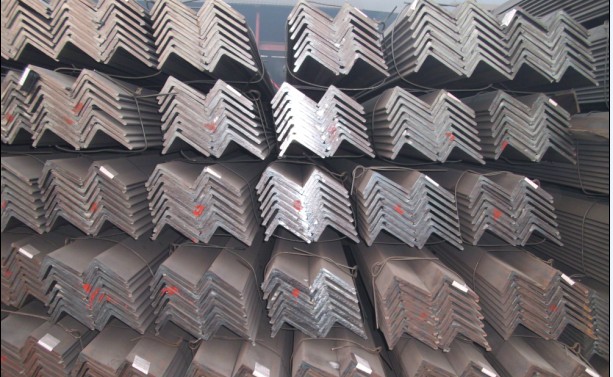
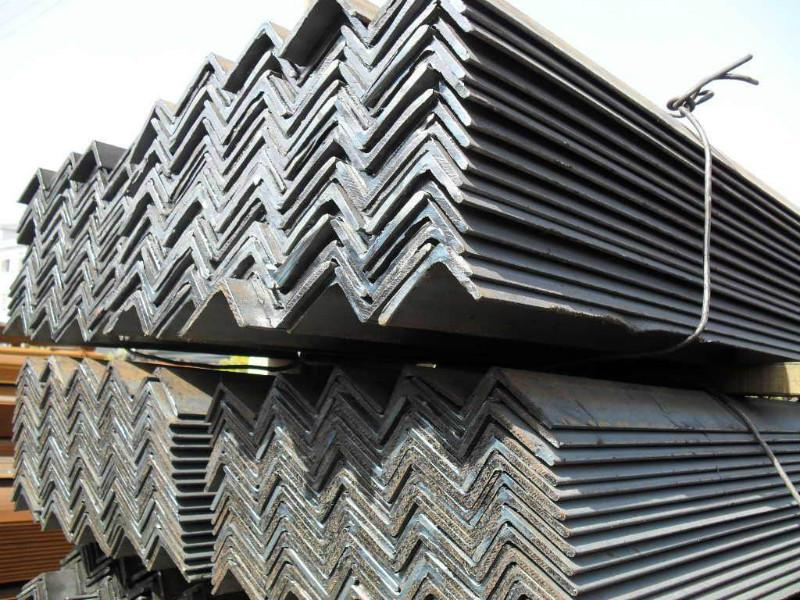

Mild steel angle bars OR Low content alloy angle bars | |
| Size | 25mm*25mm-250mm*250mm |
Wall thickness | 1.5mm-25mm |
Length | 1m-12m ,by customer’s requiremnts |
Internatioanal Standard | ISO 9001-2008 |
Standards |
ASTMA53/ASTM A573/ASTM A283/Gr.D/
BS1387-1985/
GB/T3091-2001,GB/T13793-92, ISO630/E235B/
JIS G3101/JIS G3131/JIS G3106/
|
Materials |
Q195,Q215,Q235B,Q345B,
S235JR/S235/S355JR/S355
SS440/SM400A/SM400B |
Product Category | Metallurgy,Mineral &Energy |
Technique | HOT ROLLED |
Packing | 1.Big OD:in bulk 2.Small OD:packed by steel strips 3.woven cloth with 7 slats 4.according to the requirements of customers |
Usage | Mechanical&manufacture,Steel strcuture, Shipbuilding,Bridging,Automobile chassis |
Main market | Middle East,Africa, Asia and some Uropean country and America , Australia |
Country of origin
| China |
Productivity | 15000 Metric Tons pet Month |
Remark | Payment terms :T/T ,L/C Terms of trade :FOB ,CFR,CIF ,DDP,EXW Minimum order : 10 tons Lead time :on or before 3-15 working days . |
Company information
| We, ShunYun Industrial located in PuTuo district,ShangHai city China. Our products are sold to all over the country and exported to more than 50 countries such as the EU,theUnitedStates,Australia,Southest, Asia,the Middle East,etc. We shall a good -will of credit quality and prompt delivery and hold the belief of "quality for improvement ,credit for developments and customer first".So that can offer clients advanced products and satisfied service. We sincerely would like to set up business relationship with clients from all over the world in long term business. We view credibility as life. |
Logo | ShunYun shipping mark or your company logo |
Another Name | angle steel bar ,angle steel , steel angle , mild steel angle ,carbon steel bars |
Surface processing | you can Galvanized,coated,or as your request |
Technical | Shanghai Shunyun Industrial |
you Can | Customized Sizes |
Contact information
| TEL: +86-021-62153163 FAX: +86-021-62152536 |
- Q:How are steel angles protected against abrasion?
- Steel angles are commonly used in construction and industrial applications, where they are subject to various forms of abrasion. To protect steel angles against abrasion, several methods are employed. One common method is the application of protective coatings. These coatings can be in the form of paints, epoxy coatings, or other specialized coatings designed for abrasion resistance. The coatings act as a barrier between the steel surface and the abrasive elements, preventing direct contact and reducing the wear and tear caused by friction. Another method is the use of rubber or plastic linings. These linings are typically applied to the surfaces of the steel angles that are most prone to abrasion. The rubber or plastic material absorbs the impact of abrasive forces, cushioning the steel and reducing the wear rate. Additionally, these linings provide an extra layer of protection against corrosion and chemical attacks. In some cases, steel angles may undergo a process called hardening or heat treatment. This involves subjecting the steel to high temperatures and then rapidly cooling it. This process alters the microstructure of the steel, making it harder and more resistant to abrasion. Heat-treated steel angles are commonly used in high-wear environments such as mining and material handling industries. Furthermore, engineers may opt to design steel angles with specific profiles or shapes that offer better resistance to abrasion. These profiles can include rounded edges, chamfers, or other features that minimize direct contact with abrasive materials. Overall, the protection against abrasion for steel angles involves a combination of protective coatings, linings, heat treatment, and thoughtful design. By implementing these measures, the lifespan and performance of steel angles can be significantly prolonged, reducing maintenance costs and ensuring their durability in abrasive environments.
- Q:How do steel angles contribute to sustainable transportation infrastructure?
- There are several ways in which steel angles contribute to sustainable transportation infrastructure. To begin with, steel angles are essential in building bridges and highways. Their strength and durability make them perfect for supporting heavy loads and enduring the harsh conditions that transportation infrastructure faces. Consequently, structures constructed with steel angles have a longer lifespan, reducing the need for frequent repairs or replacements. This not only saves money but also lessens the environmental impact associated with the production and disposal of construction materials. Furthermore, the use of steel angles in the construction of transportation infrastructure allows for more efficient designs. Engineers can create innovative and lightweight structures with the versatility of steel angles, resulting in the requirement of less material overall. This leads to reduced energy consumption during the construction process and decreased emissions during transportation and installation. Moreover, steel angles are recyclable. They can be easily recycled and utilized to manufacture new steel products when they reach the end of their lifespan. This lessens the demand for raw materials and minimizes waste sent to landfills. The recycling process also requires less energy and emits fewer greenhouse gases compared to the production of new steel, making it an environmentally friendly choice. Additionally, steel angles can contribute to sustainable transportation infrastructure by facilitating the integration of sustainable technologies. They can support solar panels or wind turbines, enabling the generation of clean energy to power transportation systems. By incorporating renewable energy sources into infrastructure projects, the reliance on fossil fuels can be reduced, resulting in decreased greenhouse gas emissions and a more sustainable transportation system. In conclusion, steel angles have a crucial role to play in sustainable transportation infrastructure. Their strength, durability, recyclability, and ability to support sustainable technologies make them an environmentally friendly choice. By incorporating steel angles in the construction of bridges, highways, and other transportation structures, we can create a more sustainable and resilient transportation system that reduces the environmental impact and promotes a greener future.
- Q:What is the process of galvanizing steel angles?
- To protect steel angles from corrosion, the galvanizing process encompasses multiple steps. Initially, the angles undergo a thorough cleaning process to eliminate any dirt, oil, or rust on the surface. This is achieved through pickling, wherein the angles are immersed in a solution of acid, usually hydrochloric acid, to eliminate impurities. Subsequently, the cleaned steel angles are rinsed to eliminate any remaining acid and are then dried meticulously. This step is crucial to ensure proper adhesion of the zinc coating. Following the cleaning process, the steel angles are immersed in a bath containing molten zinc. This is known as hot-dip galvanizing, where the angles are completely submerged in the zinc bath. The temperature of the bath typically reaches around 840°F (449°C). While the steel angles are immersed in the zinc bath, a metallurgical reaction occurs between the molten zinc and the steel. Consequently, a layer of zinc-iron alloy is formed on the surface of the angles. This layer offers exceptional resistance against corrosion and acts as a barrier between the steel and the corrosive elements present in the environment. Once the angles have been fully immersed in the zinc bath, they are removed and allowed to cool. The cooling process solidifies the zinc coating and ensures its adherence to the steel angles. Finally, the galvanized steel angles undergo a comprehensive inspection to ensure quality control. This involves examining the thickness, uniformity, and adherence of the coating to the angles. Various tests and measurements are conducted to verify that the galvanized coating meets the required standards and specifications. Overall, the galvanizing process for steel angles involves cleaning, immersion in a molten zinc bath, cooling, and inspection. This process yields a robust and long-lasting protective coating on the steel angles, enhancing their resistance to corrosion and extending their lifespan.
- Q:Can steel angles be used in transportation or infrastructure projects?
- Yes, steel angles can be used in transportation or infrastructure projects. They are commonly used in the construction of bridges, highways, railway tracks, and other transportation structures due to their high strength, durability, and load-bearing capabilities. Steel angles provide structural support and stability, making them suitable for various applications in the transportation and infrastructure sectors.
- Q:How do you connect steel angles together?
- There are several ways to connect steel angles together depending on the specific application and load requirements. Here are a few common methods: 1. Welding: The most common and effective method is to weld the steel angles together. This creates a strong and permanent connection. It is important to ensure proper welding techniques are followed to maintain the integrity and strength of the joint. 2. Bolting: Another method is to use bolts and nuts to connect the steel angles. This allows for easy disassembly and reassembly if required. It is important to use the correct size and grade of bolts to ensure the connection can withstand the intended loads. 3. Riveting: Rivets can also be used to connect steel angles together. This method provides a strong and permanent connection, but it requires specialized tools and expertise to properly install the rivets. 4. Adhesive bonding: In some cases, adhesive bonding techniques can be used to connect steel angles together. This method is usually used in conjunction with other fastening methods, such as welding or bolting, to provide additional strength and stability. When choosing the method to connect steel angles, it is important to consider factors such as the load requirements, environmental conditions, and expected lifespan of the structure. Consulting with a structural engineer or a professional in the field is recommended to ensure the best connection method is chosen for your specific application.
- Q:How are steel angles defined?
- Steel angles are defined based on the length of their legs, thickness, and their shape, which is typically L-shaped. These angles are commonly used in construction and engineering applications for structural support and framing purposes.
- Q:Can steel angles be used for electrical conduits?
- Steel angles cannot serve as electrical conduits. Electrical conduits are commonly made from non-metallic materials like PVC or metal materials such as galvanized steel or aluminum. Steel angles, on the other hand, are utilized for structural support and reinforcement in construction endeavors, but they are not intended or appropriate for use as electrical conduits. Electrical conduits have specific insulation, protection, and grounding requirements that steel angles do not fulfill. To ensure the integrity and efficiency of electrical installations, it is crucial to employ appropriate electrical conduits that satisfy the necessary safety standards.
- Q:How are steel angles installed or fixed in place?
- Steel angles are widely utilized in construction to supply structural support and reinforcement, with their installation or fixation employing various techniques based on the particular application and project requirements. One prevalent approach to installing steel angles is through welding, whereby the angles are permanently fused to the desired location using a welding machine. This method guarantees a robust and long-lasting connection that keeps the angles securely in place, even when subjected to substantial loads or vibrations. However, welding necessitates skilled labor and specialized equipment. Another technique involves bolting, whereby steel angles are affixed to the supporting structure using bolts or screws. This method allows for effortless installation and removal, making it suitable for situations requiring adjustments or modifications. Bolting also offers flexibility in terms of repositioning or replacing the angles if necessary. In certain instances, steel angles are attached to the structure using adhesive bonding, which entails applying a sturdy adhesive material between the angle and the supporting surface. Adhesive bonding proves particularly advantageous when welding or bolting is impractical or undesired. However, it is crucial to ensure that the adhesive employed is suitable for the specific application and capable of withstanding the loads and environmental conditions. Furthermore, a combination of methods can be employed to install steel angles. For instance, welding can serve as the primary attachment, while bolts or adhesive bonding can be employed as secondary supports or reinforcements. Consulting structural engineers or professionals is essential in determining the most appropriate method for installing steel angles, taking into account the project's unique requirements, load conditions, and local building codes. Proper installation guarantees that the angles are securely fixed in place, delivering the necessary strength and stability to the structure.
- Q:Can steel angles be used for shelving and storage racks?
- Indeed, shelving and storage racks can utilize steel angles. Given their robustness and endurance, steel angles are widely employed in construction and engineering. They offer exceptional structural reinforcement and are capable of withstanding substantial loads, making them a perfect fit for shelving and storage racks. By virtue of their easy fabrication and weldability, steel angles can be effortlessly joined together to create desired designs for shelving or storage racks. Moreover, they come in various dimensions and thicknesses, allowing for customization to meet specific storage requirements. Furthermore, steel angles exhibit resistance against corrosion, making them highly advantageous in environments where moisture or chemicals are prevalent. All in all, steel angles are a reliable and versatile option when it comes to shelving and storage racks.
- Q:Are steel angles suitable for supporting countertops?
- Yes, steel angles are commonly used for supporting countertops. Steel angles provide excellent strength and stability, making them an ideal choice for supporting heavy countertops. They can effectively distribute the weight of the countertop evenly, ensuring it remains securely in place. Steel angles also offer versatility, as they can be easily cut and shaped to fit the specific dimensions and design of the countertop. Additionally, steel angles are resistant to corrosion and durable, ensuring long-lasting support for the countertop.
1. Manufacturer Overview |
|
|---|---|
| Location | |
| Year Established | |
| Annual Output Value | |
| Main Markets | |
| Company Certifications | |
2. Manufacturer Certificates |
|
|---|---|
| a) Certification Name | |
| Range | |
| Reference | |
| Validity Period | |
3. Manufacturer Capability |
|
|---|---|
| a)Trade Capacity | |
| Nearest Port | |
| Export Percentage | |
| No.of Employees in Trade Department | |
| Language Spoken: | |
| b)Factory Information | |
| Factory Size: | |
| No. of Production Lines | |
| Contract Manufacturing | |
| Product Price Range | |
Send your message to us
MS equal/unequal black & galvanized steel angle bar with high quality
- Loading Port:
- Tianjin
- Payment Terms:
- TT OR LC
- Min Order Qty:
- 35 m.t.
- Supply Capability:
- 35000 m.t./month
OKorder Service Pledge
OKorder Financial Service
Similar products
New products
Hot products
Hot Searches
Related keywords






